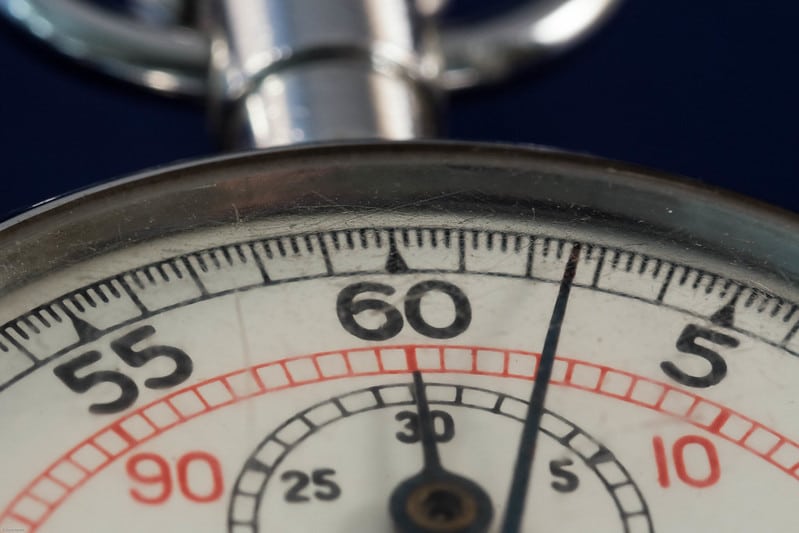From pv magazine USA
Only a few years ago, showing up prepared for a potential client involved Google Earth, a ruler, and an inkjet printer. This took time, and the numbers were always rough.
In a sales environment where only one in 10 viable projects moves forward, getting from a good idea to a hard yes or no from a customer needs to happen fast.
So, let’s imagine ourselves as solar developers under pressure and tasked with creating a design for a client proposal in only one minute. The 60-second race is on!
My firm started using Helioscope around 2014 to do quick commercial solar system layouts. Once a rooftop has been targeted, we can design a project – if we were in a race – in less than a minute. At the end of that minute, we’ll know the potential electricity generation, and how many solar panels fit on the site.
(And for the residential market, Aurora Solar has amazing features for the smaller, tighter, tree-surrounded rooftops on our homes.)
Once logged into Helioscope, the only button that matters is the big orange one labeled New Project. Clicking it launches a window that asks for a project name, address, and hardware profile.
 Click the New Project button in Helioscope. Time needed to complete action: 3 seconds
Click the New Project button in Helioscope. Time needed to complete action: 3 seconds
Our hardware profile — which we’ve already configured to specify the main components and techniques our company deploys in construction — is chosen by default. Some of the key components include solar panels, racking, and inverters, and site-specific information such as angle of panels, and required setbacks.

After entering our information, we click Create New Project. Time needed to complete action: 10 seconds.
Now we’ve arrived at the project’s custom site page within Helioscope. New designs, unique site conditions, shading, and the final design deliverables can be navigated to using this page. Our quick layout challenge takes us first to the New button, then the Create New Design field.
That’s when we get to the array design page, which is where the tool’s real beauty lies. With this page, the team at Helioscope has given the solar system sales person the ability to customize and fine-tune design on the fly, without using engineering resources.

Time needed to complete action: 20 seconds
This account has a carport profile in place (which we selected while setting up this new solar layout), so Helioscope “designs” the solar system for us. The design includes a fairly accurate conversion of Google Earth imagery dimensions into solar panel sizes, angles, and shadows.
This happens as easily as you can connect dots with a mouse. (Seriously, folks, this is magic.)
The software also chooses an inverter to connect to the panels. If you’re lucky, your solar system’s size will be a perfect fit for the default profile’s solar inverter. If not, you’ll need to find a unit that matches the output.

Time needed to complete action: 0-10 seconds
At this point, we have a nascent design of a solar power system that includes total number of solar panels, angle and azimuth of the solar system, and inverters and rough wiring.
From here, press the large “Save & Exit” button near the top of the page. Then move to the “Reports” button and click “Simulate.”

Time needed to complete action: 10 to 30 seconds
You’ve now set in motion the final action to have a technical solar power deliverable, more than enough for a first conversation with a customer.
Helioscope produces a clean, shareable diagram of the solar array, overlaying the site’s Google Earth image. The deliverable calculates the number of solar panels and inverters and provides their model numbers.
Also calculated are multiple levels of electricity generation data: monthly and first-year totals, as well the various points in the generation process where energy losses occur. These electricity loss data fields represent our final quality check before we hand the document to the customer.

First-year electricity generation along with the system’s total solar panel wattage is required to create a financial model. That model, along with the Helioscope proposal, are typically the only documents a developer needs to provide a client in the early stages of a project.
What’s more, having the opportunity to share your screen and refine the design based on the prospective customer’s input is a real added value that enhances your business reputation and just may seal the deal.
Total elapsed time for our simulated race? As little as 43 seconds.
John Fitzgerald Weaver is a solar power professional, known digitally as the ‘Commercial Solar Guy.’ His company has a construction license in Massachusetts, and directly manages projects in MA & RI. He may be reached at commercialsolarguy@gmail.com.
This content is protected by copyright and may not be reused. If you want to cooperate with us and would like to reuse some of our content, please contact: editors@pv-magazine.com.



By submitting this form you agree to pv magazine using your data for the purposes of publishing your comment.
Your personal data will only be disclosed or otherwise transmitted to third parties for the purposes of spam filtering or if this is necessary for technical maintenance of the website. Any other transfer to third parties will not take place unless this is justified on the basis of applicable data protection regulations or if pv magazine is legally obliged to do so.
You may revoke this consent at any time with effect for the future, in which case your personal data will be deleted immediately. Otherwise, your data will be deleted if pv magazine has processed your request or the purpose of data storage is fulfilled.
Further information on data privacy can be found in our Data Protection Policy.